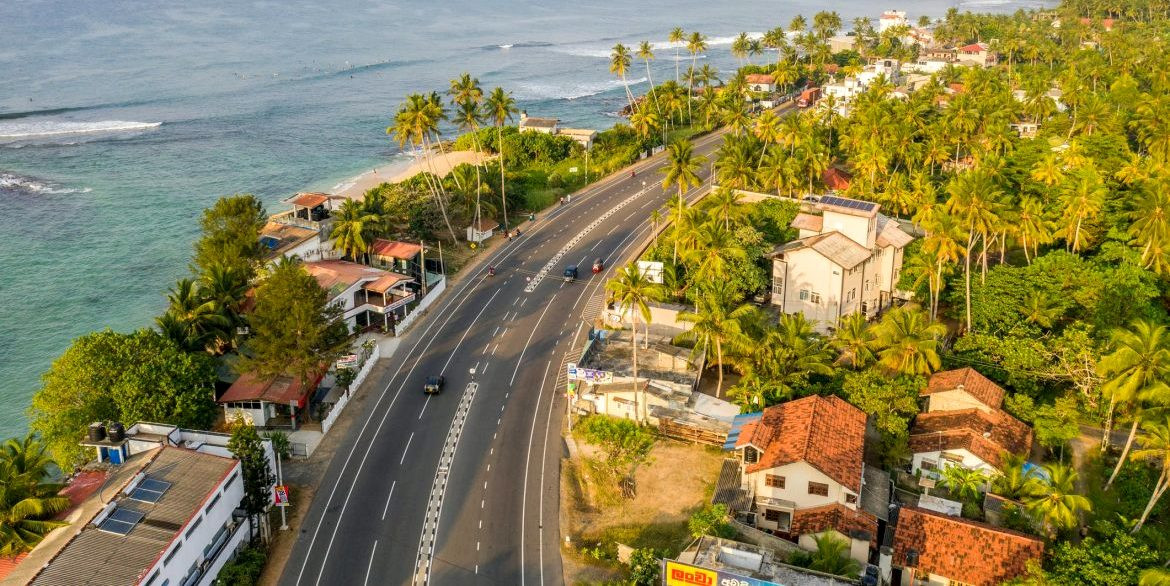Sigiriya
Sigiriya, also known as the Lion Rock, is one of Sri Lanka’s most captivating and iconic historical landmarks. Recognized as a UNESCO World Heritage Site, it is a remarkable example of ancient urban planning, art, gardening, and engineering.
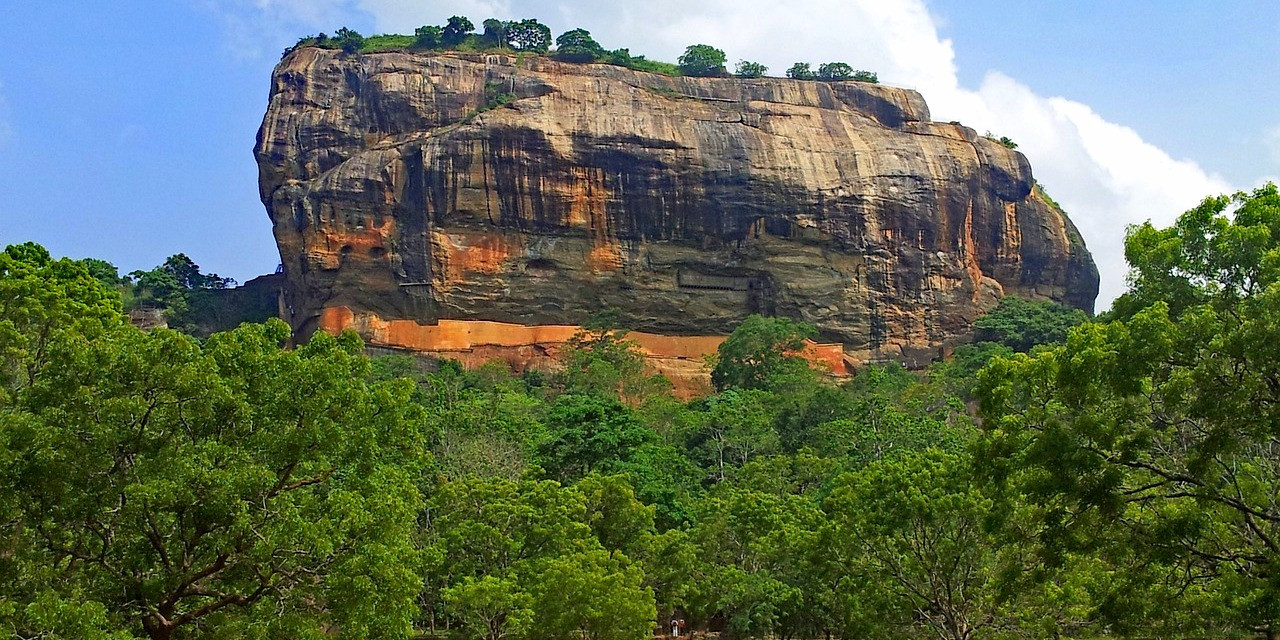
-
Geographical and Historical Background: Sigiriya is situated in the Matale District in the Central Province of Sri Lanka. The site was chosen by King Kasyapa (477–495 CE) for his new capital. He constructed his palace atop the massive rock boulder, which rises approximately 200 meters above the surrounding plains. The base of the rock is skirted by a moat, ramparts, and extensive gardens, including the renowned water gardens that display sophisticated ancient hydraulic systems still functional today.
-
Cultural Significance: The palace and fortress complex are known for their innovative architecture and irrigation technologies. One of the most famous features of Sigiriya is the Mirror Wall. Originally polished so thoroughly that the king could see himself as he walked alongside it, today it is partly covered with graffiti from as far back as the 8th century. These inscriptions are a valuable source of information on the socio-cultural aspects of the time. Above the Mirror Wall, there are frescoes painted in a sheltered pocket of the rock face. These stunning frescoes, which depict celestial maidens, are among the most important mural paintings of the ancient world, showcasing the unique art style of that period.
-
The Lion Gateway: Another fascinating aspect of Sigiriya is its entrance, originally designed in the form of a huge stone lion. Today, only the lion’s paws remain, but they still dominate the staircase that leads to the palace ruins on the summit, giving the rock its name, Lion Rock.
-
Archaeological and Tourist Attraction: Sigiriya continues to be one of the most visited archaeological sites in Sri Lanka. Visitors are drawn not only by its historical significance and architectural brilliance but also by the panoramic views of the lush jungles below, which can be seen from the summit. For those interested in archaeology, and history, or simply looking for a unique adventure, Sigiriya provides an unforgettable experience.
Sigiriya is not just an archaeological treasure but a testament to the ingenuity of ancient civilizations in Sri Lanka, making it a must-visit for anyone traveling to the country.
Galle
Galle, a major city in Sri Lanka, is steeped in rich history and cultural heritage, making it a fascinating destination for travelers. Located on the southwestern tip of the island, it is best known for its beautifully preserved colonial architecture and the historic Galle Fort, which is a UNESCO World Heritage site.
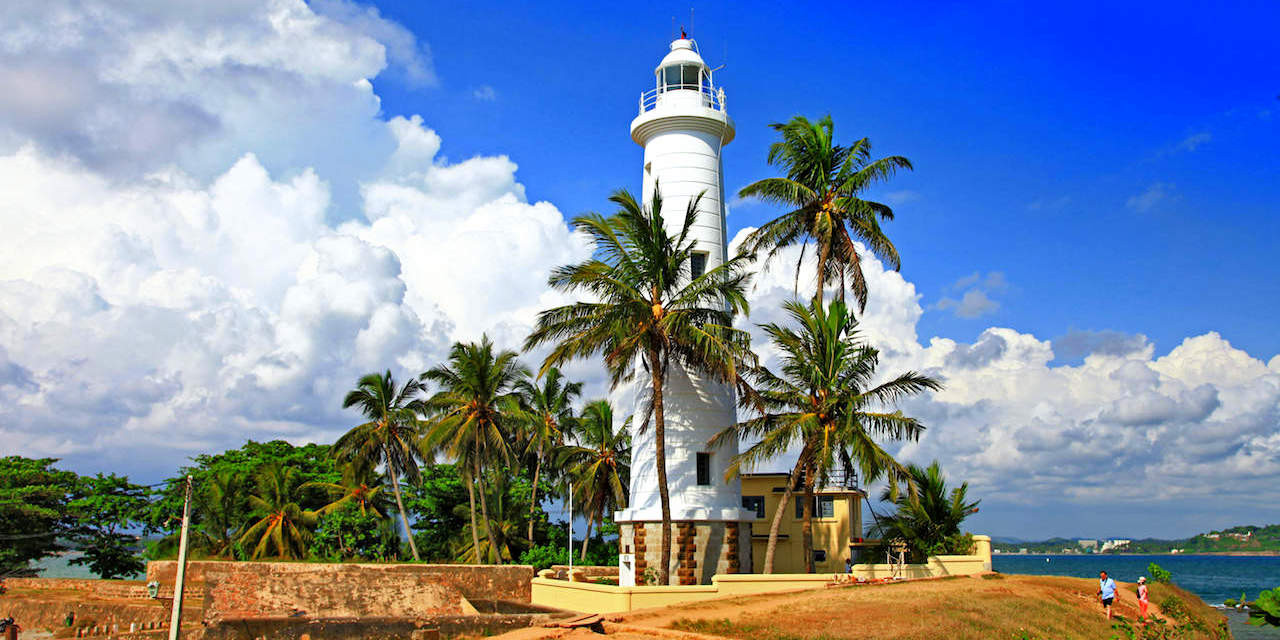
-
Historical Background: Galle's history dates back thousands of years but it gained prominence in the modern era when the Portuguese built the initial fortification in the 16th century. It was later extensively fortified by the Dutch during the 17th century. This fort, with its massive walls and bastions, encloses streets lined with colonial buildings, churches, museums, and the old Dutch government house.
-
Galle Fort: The Galle Fort, also known as the Dutch Fort, remains the focal point of the city and is an exemplary showcase of a European-built fortified city blending with South Asian traditions. Its thick granite walls protected the colonial buildings from the devastating tsunami in 2004, proving their robust construction. Today, these historical monuments coexist with chic boutiques, cozy cafes, and luxury villas, contributing to the unique ambiance of the fort area.
-
Cultural and Tourist Attractions: Walking through the fort’s narrow streets allows visitors to glimpse into the past, with many structures featuring Dutch colonial architecture, intricate carvings, and antique motifs. The National Maritime Museum, the Dutch Reformed Church, and the Galle Lighthouse are notable attractions within the fort. Beyond the fort, Galle has a vibrant arts scene, with numerous galleries and shops selling local crafts and artisan products. The annual Galle Literary Festival attracts international authors and visitors, adding to the city’s cultural calendar.
-
Natural Beauty: Outside of its historical and cultural offerings, Galle is also surrounded by gorgeous beaches like Unawatuna, which is just a short drive away. These beaches offer excellent opportunities for snorkeling, scuba diving, and relaxing under the tropical sun.
-
Impact of Tourism: Tourism plays a significant role in Galle’s economy, with visitors drawn to its rich history, cultural tapestry, and serene beaches. The blend of architectural beauty, historical depth, and modern-day amenities makes Galle a must-visit destination in Sri Lanka for those looking to experience the past and present of this island nation.
Galle represents a seamless blend of historical grandeur and contemporary life. Its well-preserved fort, vibrant cultural scene, and beautiful natural surroundings make it a compelling stop for any traveler exploring Sri Lanka.
Jaffna
Jaffna, the cultural capital of the Tamil community in Sri Lanka, offers a distinctively rich and vibrant experience compared to other parts of the island. Located on the northern tip of Sri Lanka, Jaffna has a unique cultural, historical, and social landscape shaped by both ancient traditions and recent history.
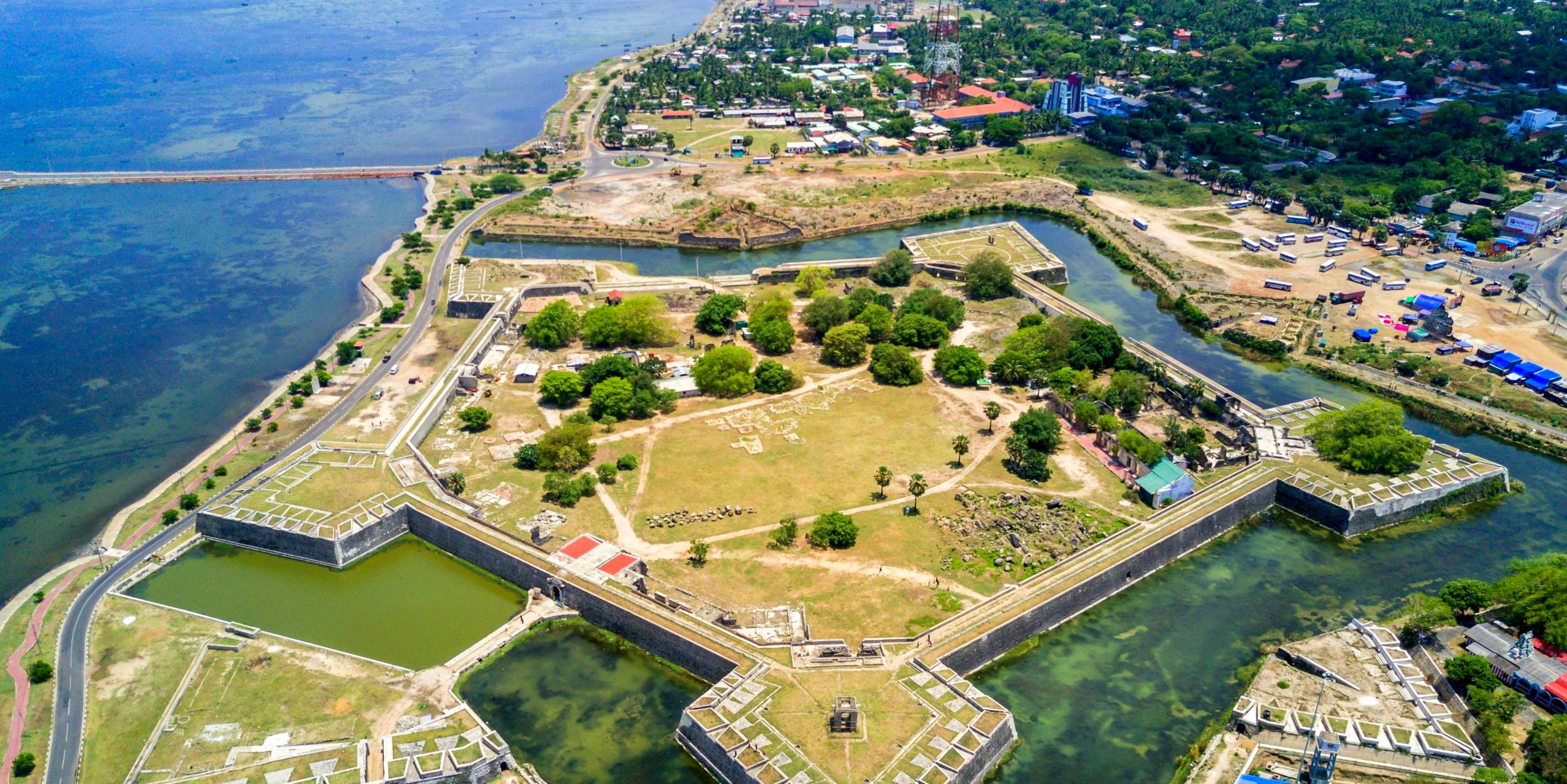
-
Historical Background: Historically, Jaffna has been a center of Hindu and Tamil culture for many centuries. It was the seat of the ancient Tamil kingdoms and later came under the influence of European colonial powers, including the Portuguese, Dutch, and British, each leaving their mark on the city’s architecture and cultural fabric. The Jaffna kingdom was known for its advanced administration and significant contributions to Tamil literature and Hindu culture.
-
Cultural Richness: Jaffna's culture is predominantly Tamil, with deep-rooted Hindu traditions evident in its many temples and cultural festivals. The Nallur Kandaswamy temple, one of the most significant Hindu temples in Jaffna, is renowned for its elaborate annual festival. Other cultural sites include the iconic Jaffna Library, once one of the largest in Asia, which was tragically burned down in 1981 during civil unrest but has since been beautifully restored.
-
Tourist Attractions: Today, Jaffna is emerging as a tourist destination keen to showcase its heritage. Visitors to Jaffna can explore the Jaffna Fort, rebuilt by the Dutch in the 17th century, which offers insights into the colonial history of the region. The bustling Jaffna market is a place to experience local life and sample regional cuisine, known for its unique flavors and ingredients, such as palmyra palm products and spicy seafood dishes.
-
Natural Beauty and Islands: Beyond the city, the Jaffna Peninsula and its surrounding islands offer serene landscapes and beaches. The shallow waters and coral reefs of Casuarina Beach are ideal for swimming, while the remote Delft Island holds wild horses and ruins dating back to the Dutch colonial period.
-
Engagement with the Diaspora: Jaffna also maintains strong ties with the Tamil diaspora worldwide, many of whom return to invest in the region and reconnect with their heritage. This connection is a significant factor in Jaffna's ongoing development and cultural preservation.
Jaffna stands as a testament to the resilience and rich cultural tapestry of Sri Lanka’s Tamil population. It offers a unique blend of historical landmarks, vibrant cultural traditions, and post-war recovery, making it an essential part of Sri Lanka's diverse identity. Visitors to Jaffna are sure to gain a deeper understanding of the complexities and beauty of this unique region.
The Commonwealth War Cemetery at Kandy
The Commonwealth War Cemetery in Kandy is a poignant and solemn site that honors the memories of soldiers from the Commonwealth nations who lost their lives during World War II. Situated in the peaceful hills of Kandy, Sri Lanka, this beautifully maintained cemetery offers a quiet space for reflection and remembrance amidst the natural beauty of the region.
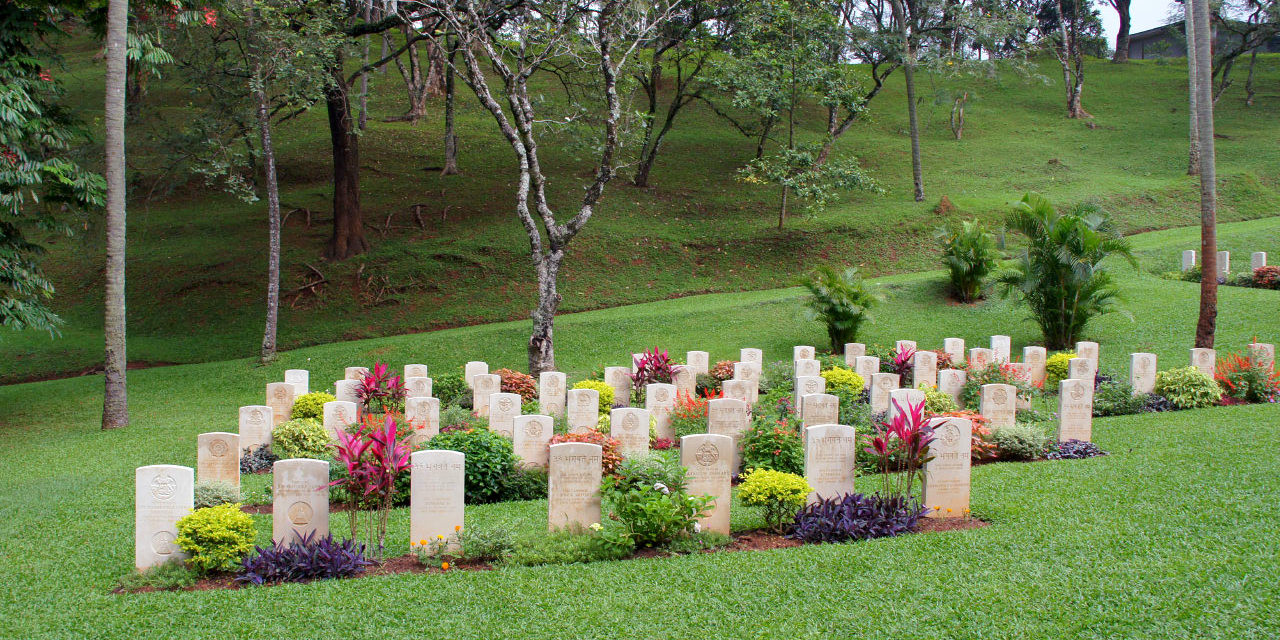
-
Historical Significance: The cemetery is one of the many war cemeteries built by the Commonwealth War Graves Commission, which is responsible for maintaining graves of the Commonwealth military forces who died in the two world wars. The Kandy Commonwealth War Cemetery, previously known as Pitakande Military Cemetery, is notable for its serene setting and the diversity of soldiers buried here. It holds the remains of over 150 soldiers from various countries, including the United Kingdom, Sri Lanka, India, Canada, Australia, Africa, and New Zealand.
-
Design and Layout: The cemetery is meticulously designed to reflect the solemnity and importance of the site. The graves are laid out in rows, each marked by a simple yet dignified white headstone, against a backdrop of carefully tended lawns and flowering shrubs. The site is surrounded by the lush greenery of the Kandyan hills, which adds to the tranquility and solemn atmosphere of the cemetery.
-
Cultural and Memorial Importance: The Commonwealth War Cemetery in Kandy serves as a testament to the sacrifices made by the Allied forces in the Asian theatre of World War II. It is a place where visitors can learn about the historical impacts of global conflicts and the individual stories of those who fought and died far from their homes. The cemetery also plays a significant role during remembrance ceremonies, such as Anzac Day and Remembrance Day, drawing visitors from around the world to pay their respects.
-
Visiting the Cemetery: Visitors to the cemetery will find it a moving experience, offering a chance to connect with history in a direct and personal way. The caretaker of the cemetery often provides insights into the lives of the soldiers buried there, adding a personal dimension to the visit. The serene environment allows for a reflective experience, encouraging visitors to contemplate the costs of war and the value of peace.
-
Accessibility and Location: Located just a short drive from the center of Kandy, the cemetery is easily accessible by road. It remains open to visitors throughout the year and does not charge an entry fee, though respectful behavior is expected from all visitors.
The Commonwealth War Cemetery in Kandy is not only a site of historical importance but also a sanctuary of peace and reflection. It stands as a reminder of the harsh realities of war and a tribute to those who sacrificed their lives in the pursuit of peace and freedom. Visiting the cemetery offers a profound glimpse into the past and an opportunity to pay homage to the brave souls who played a part in shaping the modern world.
Temple of Tooth at Kandy
The Temple of the Tooth (Sri Dalada Maligawa) in Kandy is one of the most sacred places in the Buddhist world and a pivotal cultural landmark in Sri Lanka. This revered temple complex houses the relic of the tooth of the Buddha, which has played an integral role in local and national politics, as possession of the relic has historically signified the right to rule the land.
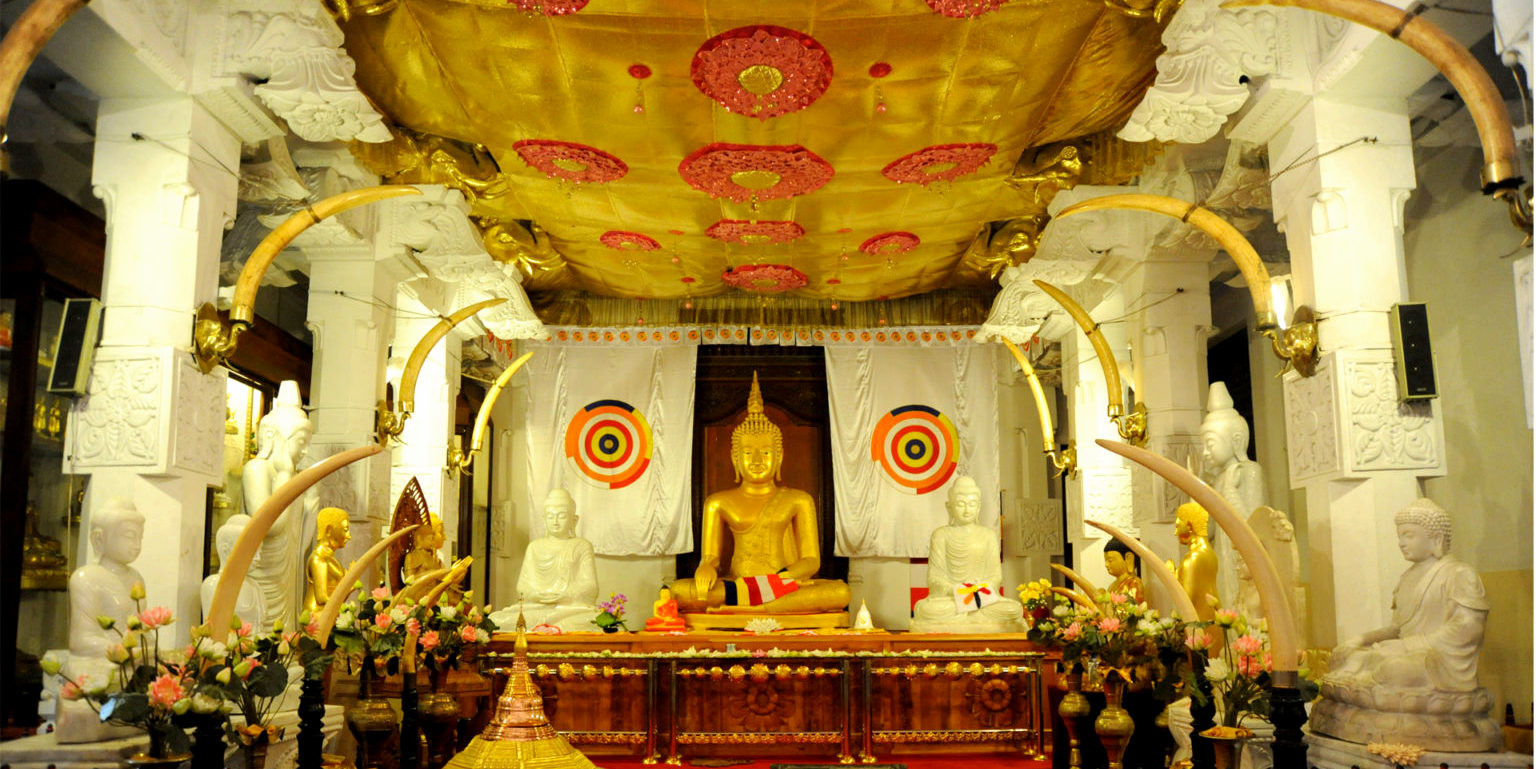
-
Historical Background: The relic of the Buddha’s tooth was brought to Sri Lanka in the 4th century AD, hidden from sacrilegious hands in the hair of a princess, following the parinirvana of the Buddha. Since then, it has been kept in various temples as it moved across the island, finally settling in Kandy, the last capital of the ancient kings' era of Sri Lanka.
-
Architectural and Cultural Significance: The architecture of the Temple of the Tooth is an excellent example of the Kandyan style, with its elaborate woodwork and decorative murals. The complex includes several buildings prominently featuring the Octagon (Patthirippuwa), the Royal Palace, and the Audience Hall, which are key historical sites within the palace grounds. The temple is situated beside the Kandy Lake, enhancing its aesthetic and spiritual ambiance.
-
Rituals and Celebrations: The temple plays a central role in the spiritual and cultural life of Sri Lanka. It is the focal point for the Esala Perahera, one of the most significant and opulent Buddhist festivals in the world. The festival, which occurs annually in July or August, features a spectacular procession including dancers, drummers, and lavishly decorated elephants. One of these elephants has the honor of carrying a replica of the tooth relic casket across the city, under a canopy of lights and music, watched by thousands of pilgrims and tourists.
-
Visitor Experience: Visitors to the Temple of the Tooth are greeted with an atmosphere of devotion and tranquility. The inner sanctum, where the tooth relic is housed, is accessible to devotees and tourists, who can observe the daily puja rituals (offering ceremonies) held to honor the relic. These ceremonies occur three times a day and provide a deep insight into the religious practices associated with the temple.
-
Cultural Impact: The Temple of the Tooth is not only a place of worship but also a symbol of historical continuity and cultural unity in Sri Lanka. It is a site where religious solemnity meets the vibrancy of Sri Lankan culture, offering an enduring memory for all who visit.
-
Access and Preservation: Managed with strict reverence and high security, the temple is open to visitors who are expected to adhere to a dress code that respects the sanctity of the site. Photography inside the main hall, particularly of the relic chamber, is typically restricted.
A visit to the Temple of the Tooth in Kandy is a journey into the heart of Sri Lankan heritage. It offers a unique blend of religious devotion, historical saga, and cultural spectacle, making it a must-visit destination for anyone traveling to Sri Lanka.
Nuwara Eliya
Nuwara Eliya, often referred to as "Little England" of Sri Lanka, is a charming town nestled in the heart of the hill country. Its cool climate, lush tea plantations, and colonial architecture make it a unique and picturesque destination, drawing visitors from around the world who seek tranquility and scenic beauty.
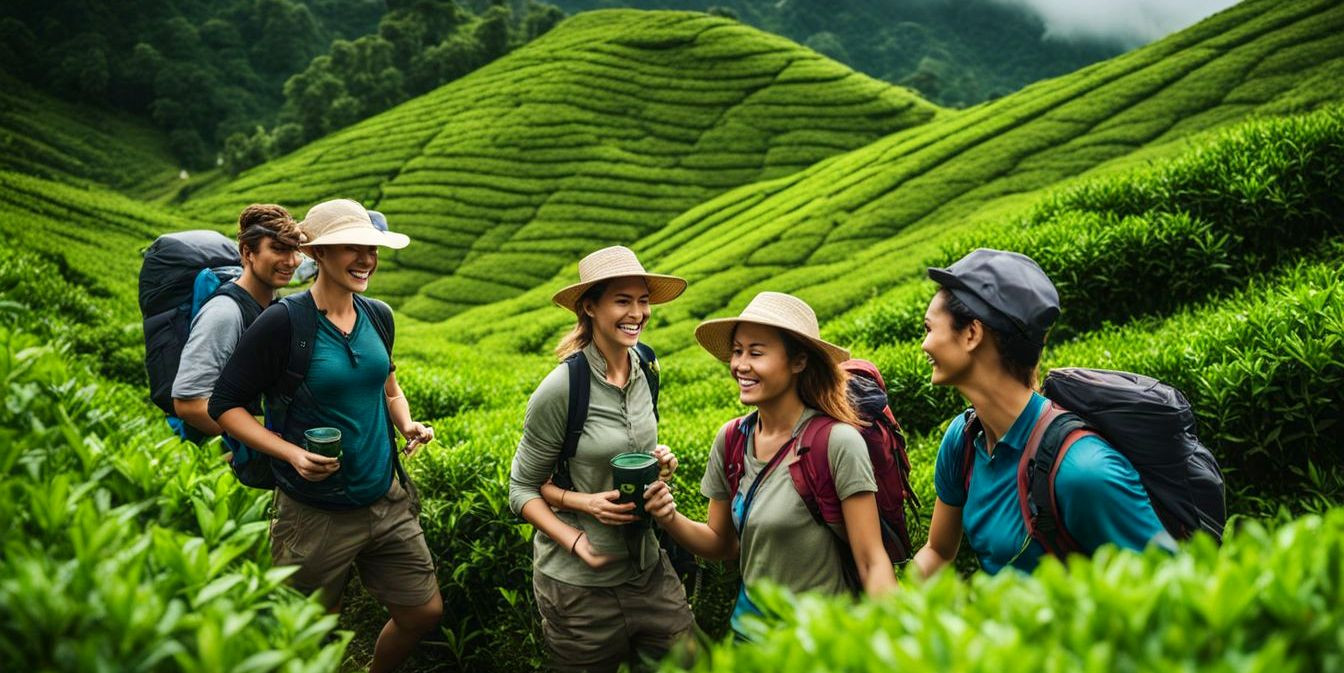
-
Geographical Setting: Located at an elevation of over 1,800 meters above sea level, Nuwara Eliya provides a cool retreat from the tropical heat of the rest of the island. Surrounded by hills covered in tea plantations and interspersed with gushing streams and waterfalls, the town offers some of the most beautiful landscapes in Sri Lanka.
-
Colonial Heritage: Founded in the 19th century by the British, Nuwara Eliya was designed to mimic a typical English village, and it retains much of its colonial character. Old brick Post offices, and country houses like The Hill Club, and Queen’s Cottage are among the many buildings that epitomize its British countryside aesthetic. Even today, these structures, complete with gabled roofs, gardens, and fireplaces, provide a glimpse into the colonial past of the region.
-
Tea Plantations: The surrounding region of Nuwara Eliya is renowned for its tea, particularly the high-grown Ceylon tea known worldwide for its high quality and distinctive flavor. Visitors can tour various tea estates like Pedro Estate or Bluefield Tea Gardens to learn about tea production, from plucking and processing to brewing. These tours often end with a taste of freshly brewed tea, a highlight for many travelers.
-
Natural Attractions: Apart from its tea estates, Nuwara Eliya is also famous for its natural beauty. The town is a base for treks to the plains of Horton Plains National Park, where the World’s End viewpoint offers spectacular views of the surrounding countryside. Nearby, the serene Gregory Lake is a popular spot for boating, horse riding, and relaxing picnics along its banks.
-
Botanical Gardens and Parks: The Hakgala Botanical Gardens, located a short drive from Nuwara Eliya, are another must-visit attraction. Established in 1861 for the cultivation of cinchona, a plant from which quinine is derived, the gardens now house an expansive collection of exotic and indigenous plants, including an impressive orchid collection.
-
Cultural and Recreational: Activities During April, Nuwara Eliya buzzes with activity as tourists and locals alike descend on the town for the Sinhala and Tamil New Year. This festive season is marked by horse races, motor races, and flower shows, transforming the quiet town into a vibrant hub of activity.
-
Accommodation: Accommodations in Nuwara Eliya range from luxurious hotels and resorts to cozy bed and breakfasts, providing options for every preference and budget. Many of these establishments maintain the charm and elegance of the colonial era, complementing the overall experience of a visit to this enchanting town.
Nuwara Eliya offers a delightful blend of natural beauty, colonial history, and cultural richness, making it a perfect escape for those seeking peace and relaxation in a picturesque setting. Whether exploring its green tea fields, enjoying its cool weather, or delving into its colonial past, Nuwara Eliya promises a memorable experience for all visitors.
Trincomalee
Trincomalee, located on the northeastern coast of Sri Lanka, is a historic port city known for its stunning natural harbor, beautiful beaches, and a rich tapestry of cultural heritage. It's a destination that offers a unique blend of natural beauty and historical significance, making it a captivating spot for travelers.
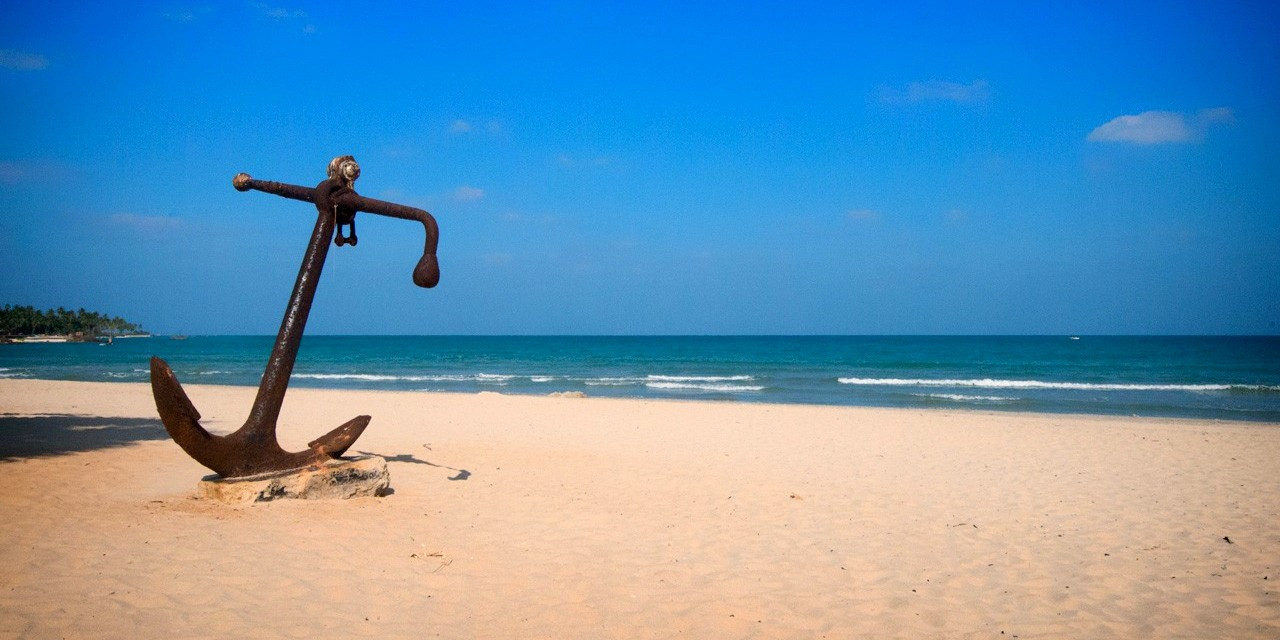
-
Geographical Highlights: Trincomalee's harbor, one of the world’s finest natural harbors, has been a pivotal maritime and trading hub throughout history, coveted by colonial powers such as the Portuguese, Dutch, and British. The city's geography, with its picturesque coastline, white sandy beaches, and clear blue waters, is ideal for swimming, snorkeling, and whale watching.
-
Cultural and Historical Significance: The city is steeped in history, with several landmarks that tell the tales of its past. The Koneswaram Temple, situated atop Swami Rock, is one of the main cultural attractions. This ancient Hindu temple, dating back to the classical medieval period, is dedicated to Lord Shiva and provides panoramic views of the Indian Ocean. It is a place of worship as well as a site of historical significance, with origins believed to go back thousands of years.
-
Maritime and Naval History: Given its strategic location, Trincomalee has been of great naval significance, which is evident from the remnants of Fort Fredrick. The fort, built by the Portuguese in the 17th century and later occupied by the Dutch and British, today houses the Koneswaram Temple and provides a glimpse into the colonial military architecture and history of the region.
-
Natural Attractions: Trincomalee's beaches are among its biggest draws. The Uppuveli and Nilaveli beaches are renowned for their soft white sand and crystal-clear waters, offering tranquil settings for relaxation and water sports. These beaches also serve as the launching points for whale watching tours and visits to the nearby Pigeon Island National Park, a popular spot for snorkeling and exploring coral reefs.
-
Wildlife and Marine Biodiversity: The waters around Trincomalee are rich in marine biodiversity, including large populations of whales and dolphins. The whale-watching season, which runs from May to October, is a major tourist attraction, with Blue and Sperm whales being the most commonly sighted species.
-
Local Life and Cuisine: Trincomalee's local life is vibrant, with markets offering fresh seafood and local crafts. The cuisine here is influenced by its coastal environment, with seafood being a staple. Visitors can enjoy local dishes that blend Tamil and Sinhalese flavors, creating a unique culinary experience.
-
Accommodation and Accessibility: The city accommodates a range of tourists with options varying from luxury resorts to budget guesthouses, most of which offer easy access to the beaches and major tourist sites. Trincomalee is accessible by road from Colombo and other major cities in Sri Lanka, and also has a railway station, making it convenient for travelers.
Trincomalee is a compelling blend of natural beauty, historical richness, and cultural diversity, making it a must-visit for those exploring Sri Lanka. Whether it's lounging on pristine beaches, delving into the history at ancient sites, or experiencing the vibrant local culture and wildlife, Trincomalee offers something for every traveler.
The Red Mosque, Colombo
The Red Mosque, officially known as Jami Ul-Alfar Masjid, is one of the most iconic landmarks in Colombo, Sri Lanka. Its distinctive architecture and striking red and white color pattern make it stand out in the heart of Colombo’s bustling Pettah district. This mosque is not only a major religious site for the Muslim community but also a popular tourist attraction due to its unique design and historical significance.
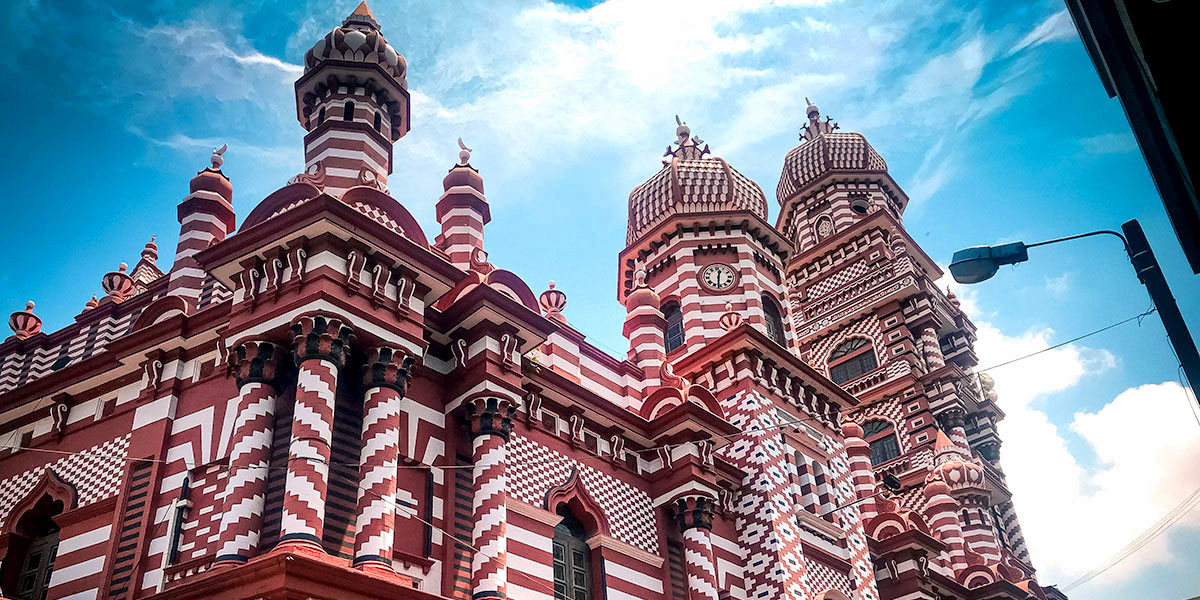
-
Architectural Significance: Built-in 1909, the Red Mosque is an exemplary piece of Islamic architecture that incorporates Indo-Saracenic influences, which is a blend of Indian, Islamic, and Gothic revival styles. The mosque's design features an abundance of pinnacles, balconies, and arches, with the most striking feature being its red and white candy-striped exterior and onion-shaped domes. The colors and patterns are so vivid that the mosque is visible from quite a distance and is immediately recognizable.
-
Cultural and Historical Context: The Jami Ul-Alfar Masjid was constructed during the British colonial period and quickly became a pivotal point for the Muslim community in Colombo. It was designed by Habibu Labbe Saibu Labbe, a local architect, and built by the community’s contributions. Originally, it served as a landmark for sailors approaching the port, indicating that they were nearing the port of Colombo. Over the years, it has remained a symbol of the religious and cultural identity of the Muslim population in the area.
-
Religious Importance: The mosque is actively used for daily prayers, accommodating thousands of worshippers, especially during Friday prayers and the holy month of Ramadan. Its interior, although not as vividly colored as the exterior, still features intricate tile work and scriptural art that enhance its spiritual ambiance.
-
Tourism and Accessibility: Visitors to Colombo are often drawn to the Red Mosque for both its historical value and architectural beauty. While non-Muslim visitors can enter the mosque outside of prayer times, modest dress is required, and women may need to cover their heads as a sign of respect. Photography is allowed, but it's advisable to be discreet and respectful, especially when worshippers are present.
-
Community Engagement: The mosque also plays a significant role in the local community, serving as a center for educational and social activities. It helps foster a sense of community and provides a space for cultural and religious events, reinforcing its status as a key social and religious hub in Colombo.
The Red Mosque in Colombo is more than just a place of worship; it is a beacon of cultural heritage and architectural wonder in Sri Lanka. Its stunning design and vibrant facade not only embellish the skyline of Colombo but also embody the multicultural tapestry of the city. For travelers interested in architecture, history, or religious studies, the Red Mosque offers a fascinating glimpse into the Islamic culture of Sri Lanka.
Kandy Botanical Gardens
The Royal Botanical Gardens, commonly known as the Peradeniya Botanical Gardens, located near Kandy in Sri Lanka, are among the most beautiful and revered botanical gardens in Asia. Sprawling over 147 acres by the banks of the Mahaweli River, these gardens are not only a center for botanical research and conservation but also a popular attraction for both locals and tourists seeking a tranquil and picturesque escape.
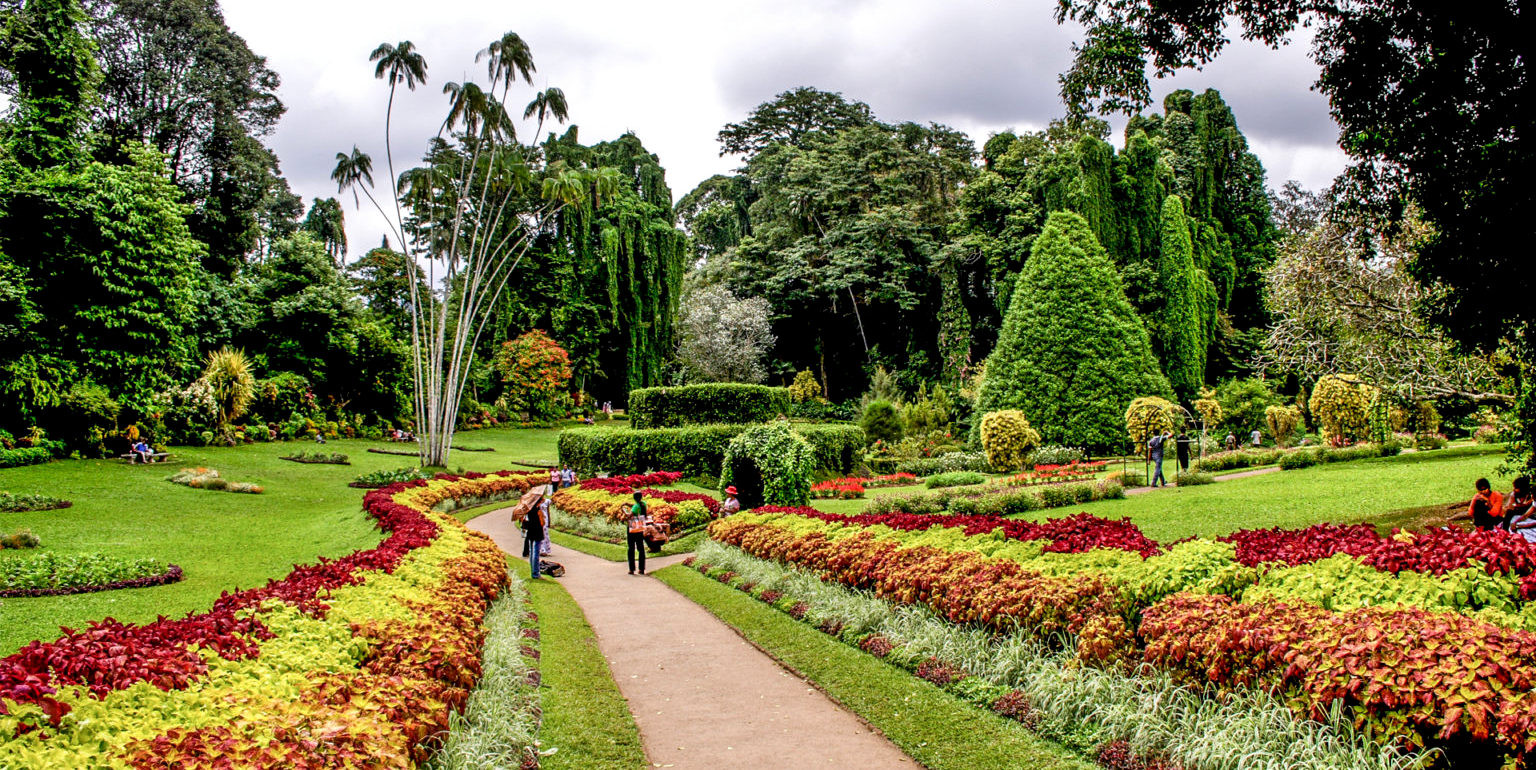
-
Historical Background: The origins of the Peradeniya Botanical Gardens date back to the 14th century, but it was formally established as a botanical garden in 1821 during the British colonial era. Initially designed as a pleasure garden for the Kandyan Queen, it was later transformed into a botanical garden by the British, serving both scientific research and leisure purposes.
-
Floral Diversity: The gardens are renowned for their collection of orchids, which is one of the most diverse in the world, featuring more than 300 varieties. In addition to orchids, the gardens boast a wide array of plants, including medicinal herbs, spices, palm trees, and an impressive arboretum. The giant Javan fig tree on the great lawn is one of the garden’s most famous attractions, known for its sprawling aerial roots and immense canopy.
-
Educational and Research Role: The Royal Botanical Gardens play a crucial role in botanical research and education in Sri Lanka. They house a herbarium, plant nursery, and several conservatories that are used for educational purposes, helping students and researchers study plant species that are vital for the region's biodiversity. Conservation programs aimed at preserving rare and endemic plants are also a key focus of the gardens.
-
Tourist Attraction: For tourists, the gardens offer a splendid opportunity to experience the lush landscapes and serene environment. Pathways wind through the expansive grounds, leading visitors through thematic sections, each dedicated to different types of flora. The Orchid House, Fernery, and Spice Garden are particularly popular, offering a closer look at the variety and beauty of Sri Lanka’s plant life.
-
Cultural Significance: Apart from its botanical importance, the garden is also a place of historical and cultural significance. It has been visited by numerous dignitaries and public figures over the years, adding to its prestige and historical value. The garden also hosts various cultural events and festivals, which highlight Sri Lankan heritage and traditions, drawing even larger crowds.
-
Visitor Experience: Visitors to the Peradeniya Botanical Gardens can enjoy a range of activities besides walking and plant observation. Picnicking on the lawns, photography, bird watching, and educational tours make it a versatile destination that appeals to all age groups and interests. The calm and well-maintained environment provides a peaceful retreat from the hustle and bustle of city life.
-
Accessibility: Easily accessible from Kandy, the gardens are open to the public year-round, providing a full-day experience for those interested in nature and horticulture. Facilities within the garden include a cafeteria, restrooms, and ample parking, ensuring a comfortable visit for all.
The Royal Botanical Gardens in Peradeniya are a testament to Sri Lanka’s rich botanical heritage and a cornerstone of cultural and scientific education. They offer a lush, educational, and relaxing environment for anyone looking to immerse themselves in nature’s beauty. Whether you are a botany enthusiast, a history buff, or simply looking for a peaceful place to unwind, the Peradeniya Botanical Gardens are a must-visit destination when in Sri Lanka.
Yala National Park
Yala National Park is one of Sri Lanka's most famous wildlife sanctuaries and a must-visit destination for nature lovers and adventure seekers. Located in the southeastern region of the island, this park covers an impressive 979 square kilometers, making it the second-largest national park in Sri Lanka. It's renowned for its biodiversity, with a variety of ecosystems including moist monsoon forests, dry monsoon forests, semi-deciduous forests, thorn forests, grasslands, fresh water and marine wetlands, and sandy beaches.
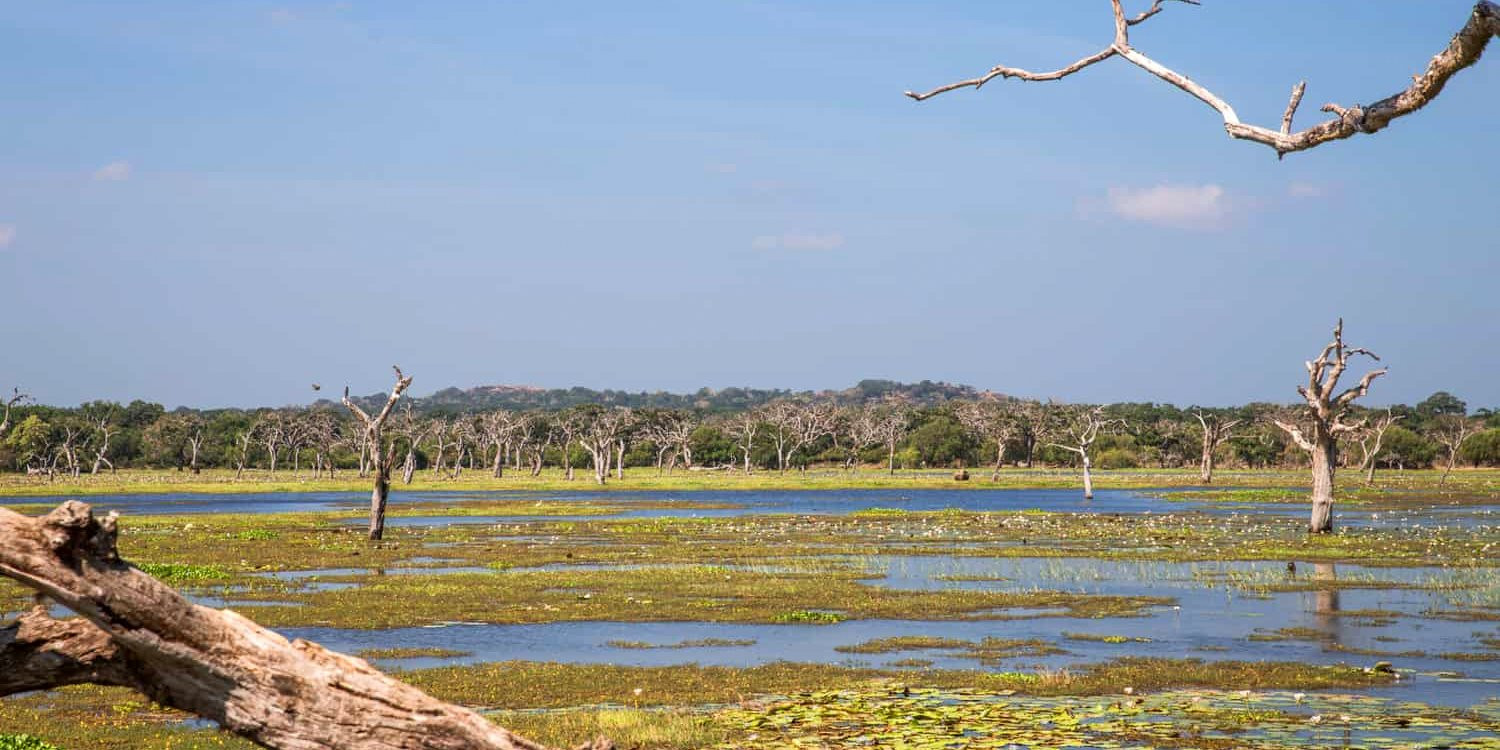
-
Biodiversity and Wildlife: Yala is particularly famous for its high density of leopards, making it one of the best places in the world to observe these magnificent big cats in their natural habitat. The park is divided into five blocks, with Block I being the most visited due to its high leopard population. In addition to leopards, Yala hosts a large number of elephants, sloth bears, crocodiles, wild water buffaloes, and numerous species of deer. The avian life in Yala is also prolific, with over 215 bird species recorded in the park, making it a haven for birdwatchers. The park's lagoons and waterholes attract large flocks of migratory and resident birds including flamingos, pelicans, spoonbills, and herons.
-
Conservation Efforts: Yala National Park plays a critical role in the conservation of Sri Lankan wildlife. It is part of a network of protected areas in the southeast of the country, and efforts are continuously made to maintain its natural environment and protect the species that depend on it. Conservation programs and research on wildlife behavior and health are ongoing, with collaboration between local authorities and international wildlife organizations.
-
Visitor Experience: Safari tours are the primary activity in Yala National Park. These are available in the form of jeep safaris that take visitors through the park's diverse landscapes, offering the chance to spot wildlife in their natural surroundings. The best times for wildlife viewing are early morning and late afternoon when animals are most active. The park is equipped with a few campsites where adventurous travelers can experience a night in the wild. More luxurious lodging options are available outside the park boundaries, providing greater comfort while maintaining proximity to the park.
-
Cultural Significance: Yala is not only a wildlife sanctuary but also a place of cultural and historical significance. Within the park boundaries, there are two important pilgrimage sites, Sithulpawwa and Magul Vihara, ancient Buddhist temples that attest to the region's rich cultural heritage.
-
Accessibility and Best Time to Visit: Yala National Park is accessible via road from Colombo or the nearby towns of Tissamaharama and Kirinda. The park is generally open to visitors throughout the year, but it closes briefly during the dry season (September to October) for maintenance. The best time to visit for optimal wildlife viewing is during the dry season, from February to June, when animals come out to the water sources, making them easier to spot.
Visiting Yala National Park offers an unparalleled opportunity to connect with nature and witness the splendor of Sri Lankan wildlife in one of the most biodiverse spots on the island. Whether you're there to see the leopards, elephants, or incredible bird life, Yala provides a profound experience that resonates with all who venture into this majestic wilderness.
Tips for 10 Most Visited Places in Sri Lanka
Exploring the 10 most visited places in Sri Lanka offers a unique blend of cultural heritage and natural beauty. To enhance your experience and ensure a respectful visit, here are combined tips for these popular destinations:
-
Early Visits: For sites like Sigiriya Rock Fortress and Galle Fort, visiting early in the morning helps avoid the crowds and the heat.
-
Appropriate Attire: Places like the Temple of the Tooth in Kandy require visitors to cover their shoulders and legs. Similarly, respectful dress is advised when visiting the Red Mosque in Colombo.
-
Stay Hydrated: Whether climbing Sigiriya or walking through the expansive Peradeniya Botanical Gardens, carrying water is essential.
-
Local Cuisine: In Jaffna, don’t miss out on the local Tamil cuisine, renowned for its unique flavors.
-
Guided Tours: Opt for guided tours at sites like the Kandy Commonwealth War Cemetery to gain deeper insights into their historical significance.
-
Check Timing: Visit the Red Mosque outside prayer times and plan safari tours in Yala during early morning or late afternoon for the best wildlife viewing.
-
Footwear and Comfort: Comfortable footwear is a must for places with extensive walking and climbing, such as Sigiriya and the botanical gardens.
-
Weather Preparation: For cooler climates in Nuwara Eliya, carry warm clothing. Meanwhile, sun protection is crucial in open areas like Trincomalee's beaches and Yala National Park.
-
Cultural Sensitivity: Understanding local customs and traditions enhances the experience and shows respect to the local communities.
-
Advance Bookings: Activities like whale watching in Trincomalee and safaris in Yala National Park can fill up quickly; booking in advance is recommended.
By following these tips, you’ll not only respect the local culture and environment but also enjoy a richer and more immersive experience during your travels across Sri Lanka's most cherished sites.
Ideal Time for 10 Most Visited Places in Sri Lanka
Here’s how to best plan your visits to top attractions in Sri Lanka according to the country's seasonal variations:
Dry Season (December to March)
-
Ideal for climbing historical fortresses and exploring ancient ruins as there are fewer rains.
-
Perfect for city tours and exploring historic streets and forts near the coast, enjoying sunny weather ideal for sightseeing.
-
A great time for visiting religious and historic sites in central highland areas, with lower rainfall providing a pleasant climate.
-
Best for touring botanical gardens, as the post-monsoon period leaves the foliage lush and vibrant.
Inter-Monsoon Season (April to September)
-
April brings local New Year celebrations, offering a festive atmosphere with cultural events and natural beauty in full bloom in highland areas.
-
Dry, sunny days make this season perfect for beach activities, diving, and marine exploration in northeastern coastal areas.
-
Optimal for wildlife viewing as animals gather around water sources in national parks, especially during the drier months.
Monsoon Season (May to August for Southwestern Monsoon; October to January for Northeastern Monsoon)
-
After the monsoons, northern regions are cooler and drier, making exploration more comfortable and enjoyable.
-
Although city and coastal areas in the southwest can be visited year-round, it’s best to avoid heavy rains if possible, which can hinder outdoor activities.
Off-Peak Season (September to November)
-
Visiting southern coastal areas during this time can mean fewer tourists and potentially lower prices, but occasional showers may occur.
-
Rains are more frequent in central areas, but the landscape is especially lush, enhancing the beauty of natural and historical sites.
By aligning your travel plans with the optimal seasons, you can enhance your experience and enjoyment of the cultural and natural heritage throughout Sri Lanka, ensuring a more comfortable and fulfilling journey.
Discovering the ten most visited destinations in Sri Lanka provides an unusual mix of historical sights, natural beauty, and active society. From sacred temples and ancient fortifications to rich botanical gardens and exciting wildlife parks, every location highlights Sri Lanka's diversity. Timing your trip with the best season for each destination will improve your experience, guaranteeing pleasant weather and maximum access to events. Sri Lanka guarantees a fascinating and remarkable trip whether you are attracted to cultural depths, natural wonders, or historical insights. Remember to honor regional traditions while you tour the core of this amazing island.
FAQs for 10 Most Visited Places in Sri Lanka
Q. What is the best time to visit Sri Lanka?
A. The best time depends on the region. For the west and south coasts and hill country, December to March is ideal. The east coast is best from May to September.
Q. Do I need a visa to visit Sri Lanka?
A. Most travelers need an Electronic Travel Authorization (ETA) which can be applied for online before arrival. Some nationalities may require a visa from a Sri Lankan embassy or consulate.
Q. Is Sri Lanka safe for tourists?
A. Sri Lanka is generally safe for tourists. However, it's advisable to follow standard travel safety precautions and stay informed about local conditions.
Q. Can I use credit cards in Sri Lanka?
A. Credit cards are widely accepted in cities and tourist areas. However, it's advisable to carry cash, especially in remote areas.
Q. What are the must-try foods in Sri Lanka?
A. Some must-try dishes include hoppers, kottu, Sri Lankan curry, and seafood. Don't forget to try the famous Ceylon tea.
Q. What should I wear when visiting temples in Sri Lanka?
A. Dress modestly when visiting temples. Cover shoulders and legs, and remove shoes and hats before entering.
Q. Is English widely spoken in Sri Lanka?
A. English is commonly spoken in tourist areas, hotels, and by guides. However, in rural areas, communication may be more challenging.
Q. Are there specific health concerns in Sri Lanka?
A. Recommended vaccinations include Hepatitis A and Typhoid. Malaria risk is generally low, but precautions against mosquito bites are advised.
Q. What is the currency of Sri Lanka?
A. The currency is the Sri Lankan Rupee (LKR). It's advisable to have local currency for small purchases.
Q. Can I use public transport to get around?
A. Yes, public transport like buses and trains are available, but hiring a car with a driver is often recommended for convenience and comfort.
For the Nepal tour, please click here.
If you are looking for different kinds of Nepal Tours or Trekking Packages, feel free to contact us.
